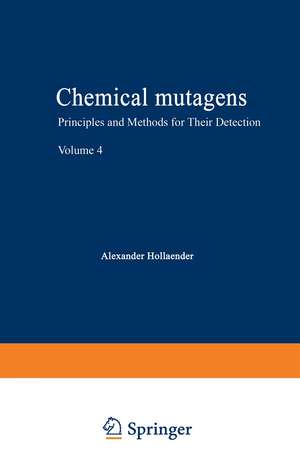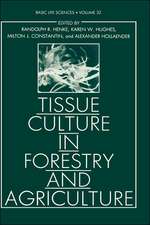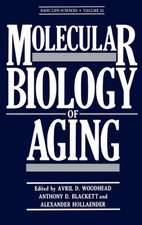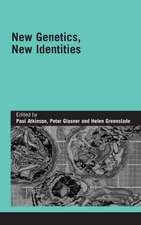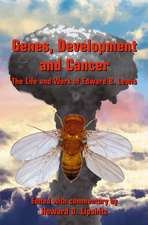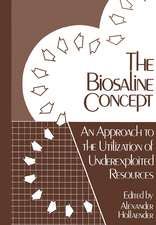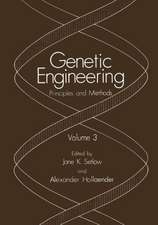Chemical Mutagens: Principles and Methods for Their Detection Volume 4
Autor Alexander Hollaenderen Limba Engleză Paperback – 19 mar 2012
| Toate formatele și edițiile | Preț | Express |
|---|---|---|
| Paperback (4) | 369.84 lei 6-8 săpt. | |
| Springer Us – 5 feb 2012 | 369.84 lei 6-8 săpt. | |
| Springer Us – 18 feb 2012 | 372.38 lei 6-8 săpt. | |
| Springer Us – 19 mar 2012 | 372.59 lei 6-8 săpt. | |
| Springer Us – 10 sep 2012 | 718.65 lei 6-8 săpt. |
Preț: 372.59 lei
Preț vechi: 392.21 lei
-5% Nou
Puncte Express: 559
Preț estimativ în valută:
71.33€ • 73.40$ • 60.13£
71.33€ • 73.40$ • 60.13£
Carte tipărită la comandă
Livrare economică 01-15 martie
Preluare comenzi: 021 569.72.76
Specificații
ISBN-13: 9781468408942
ISBN-10: 1468408941
Pagini: 384
Ilustrații: XVIII, 364 p. 27 illus.
Dimensiuni: 152 x 229 x 20 mm
Greutate: 0.51 kg
Ediția:Softcover reprint of the original 1st ed. 1976
Editura: Springer Us
Colecția Springer
Locul publicării:New York, NY, United States
ISBN-10: 1468408941
Pagini: 384
Ilustrații: XVIII, 364 p. 27 illus.
Dimensiuni: 152 x 229 x 20 mm
Greutate: 0.51 kg
Ediția:Softcover reprint of the original 1st ed. 1976
Editura: Springer Us
Colecția Springer
Locul publicării:New York, NY, United States
Public țintă
ResearchCuprins
of Volume 3.- 24 History of Research on Chemical Mutagenesis.- I. Introduction.- II. War Gases.- III. Other Alkylating Agents.- IV. Nitroso Compounds.- V. Urethane.- VI. Alkaloids.- VII. Inorganic Salts.- VIII. Formaldehyde, Organic Peroxides.- IX. Nitrous Acid.- X. Calf Thymus DNA and Other Macromolecules, Carcinogens.- XI Phenols.- XII. Basic Dyes.- XIII. Purines.- XIV. Base Analogues.- XV. Epilogue.- XVI. References.- 25 Observations on Meiotic Chromosomes of the Male Mouse as a Test of the Potential Mutagenicity of Chemicals in Mammals.- I. Introduction.- II. Methods for Detecting Chromosome Aberrations.- III. Experimental Results with Ionizing Radiation.- IV. Experimental Results with Chemical Mutagens.- V. Acknowledgments.- VI. References.- 26 Techniques for Monitoring and Assessing the Significance of Mutagenesis in Human Populations.- I. Introduction.- II. Kinds of Information about Human Populations Needed for Monitoring.- III. Limitations and Advantages of Using Existing Population Records.- IV. Information Content of the Available Records.- V. Methods of Record Linkage.- VI. Relevant Data Obtained by Record Linkage.- VII. Future Accessibility of Diagnostic Data.- VIII. Mutagenesis and the Search for an Optimum Environment for Man.- IX. Conclusions for Geneticists.- X. References.- 27 Specific-Locus Mutational Assay Systems for Mouse Lymphoma Cells.- I. Introduction.- II. HGPRT Locus.- III. TK Locus: General Principles.- IV. TK Locus in a Mutational Assay System.- V. Concluding Remarks.- VI. Acknowledgments.- VII. References.- 28 Approaches to Monitoring Human Populations for Mutation Rates and Genetic Disease.- I. Introduction.- II. Theoretical Importance of Measurements in Man.- III. Practical Importance of Human Genetic Monitoring.- IV. Study of Mutation atthe Molecular Level.- V. Critique of Genetic Monitoring Based on Electrophoresis.- VI. Does the Initial Approach Meet the Criteria for a Satisfactory Monitoring System?.- VII. Estimates of the Magnitude of Effort Required.- VIII. Importance of Accurate Information.- IX. Some Technological Requirements.- X. Assessment of Technological Possibilities (Using Electrophoresis).- XI. Methods Based on Activity Measurements.- XII. Low Molecular Weight Substances.- XIII. Confirmatory Analyses, Genetic Follow-up, and Data Reduction.- XIV. Genetic Monitoring as a National Problem.- XV. Conclusions.- XVI. References.- 29 Repair of Chemical Damage to Human DNA.- I. Introduction.- II. Sequence of Molecular Events in Experiments with Mutagenic and Carcinogenic Agents.- III. What Can DNA Repair Studies Tell Us?.- IV. Methods of Studying Repair.- V. The Two Forms of Repair as Measured by BrUra Photolysis.- VI. Classification of DNA-Damaging Chemical Agents According to the Repair Sequence Induced.- VII. Xeroderma Pigmentosum and UV-Type Repair after Chemical Damage to DNA.- VIII. Summary of Present Interpretations.- IX. Acknowledgments.- X. References.- 30 Tradescantia Stamen Hairs: A Radiobiological Test System Applicable to Chemical Mutagenesis.- I. Introduction.- II. Techniques and Procedures.- III. Characteristic Data Obtained from the Stamen-Hair System.- IV. Summary.- V. Acknowledgments.- VI. References.- 31 Detection of Genetically Active Chemicals Using Various Yeast Systems.- I. Brief Description of the Yeasts Used in Genetic Research.- II. Techniques.- III. Treatment Conditions.- IV. Systems Used to Detect Mutagenicity of Chemicals.- V. Evaluation of Mutagenesis Experiments and Complications.- VI. The Problem of Metabolic Activation.- VII. Mitotic Recombination.- VIII. MethodsUsed to Increase Sensitivity to Genetically Active Agents.- IX. General Evaluation.- X. Acknowledgments.- XI. References.- 32 Total Reproductive Capacity in Female Mice: Chemical Effects and Their Analysis.- I. Introduction.- II. Oocyte Development and Responses to Radiation Effects.- III. General Procedure.- IV. Fertility Effects of Alkylating Chemicals on Female Mice.- V. Delayed Pathological and Survival Effects in Chemically Treated Female Mice in the Total Reproductive Capacity Experiment.- VI. Importance of Using Females in Fertility Studies.- VII. Need for Assay Systems in Female Mice to Measure Induced Heritable Genetic Damage.- VIII. References.- 33 Insect Chemosterilants as Mutagens.- I. Introduction.- II. Screening of Chemosterilants.- III. Classification of Chemosterilants.- IV. Conclusion.- V. References.- 34 The Literature of Chemical Mutagenesis.- I. Introduction.- II. The State of Chemical Mutagenesis Literature.- III. Sources and Types of Chemical Mutagenesis Literature.- IV. Organization of Chemical Mutagenesis Information.- V. Some Suggestions for Improving Literature Control.- VI. Conclusion.- VII: Acknowledgments.- Author Index.
